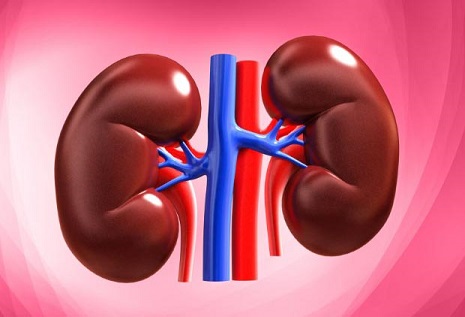Human kidney organoid study reveals that Monkeypox (Mpox) virus can infect kidneys
Nikhil Prasad Fact checked by:Thailand Medical news Team Aug 20, 2024 1 year, 2 months, 4 weeks, 2 days, 19 hours, 28 minutes ago
Mpox News: A study conducted by an international team of researchers has uncovered that the Mpox (Monkeypox) virus is not limited to skin lesions and respiratory complications. It also has the potential to infect human kidneys. This study, which involved scientists from Erasmus MC-University Medical Center in Rotterdam, the Netherlands, and King Abdullah University of Science and Technology in Saudi Arabia, provides new insights into the viral behaviors of the Mpox virus, using human kidney organoids as a model. This
Mpox News report explores the key findings of this research, which have significant implications for understanding the virus's full impact on the human body.
 Human kidney organoid study reveals that Monkeypox (Mpox) virus can infect kidneys
Mpox Virus: Beyond Skin and Respiratory Symptoms
Human kidney organoid study reveals that Monkeypox (Mpox) virus can infect kidneys
Mpox Virus: Beyond Skin and Respiratory Symptoms
Traditionally, Mpox, caused by the Orthopoxvirus, has been associated with skin lesions and systemic issues such as diarrhea and neurological complications. However, recent outbreaks, particularly the multi-national spread in 2022, have highlighted a broader spectrum of symptoms and complications, including acute kidney injury. The virus was also detected in the urine of infected individuals. This led researchers to hypothesize that the virus might directly infect the kidneys, a suspicion that had yet to be thoroughly investigated due to the lack of kidney biopsies from infected patients.
The Breakthrough Use of Kidney Organoids
Human kidney organoids, derived from pluripotent stem cells, are lab-grown, miniature models that mimic key structures of the human kidney. These organoids have been increasingly used in research to study renal diseases and pathogen infections. For this study, the team generated kidney organoids to explore their susceptibility to Mpox virus infection.
The organoids were inoculated with Mpox virus particles, and the researchers observed the virus's activity over time. The results were striking. Within just 48 hours of exposure, there was a significant increase in viral DNA within the organoids, demonstrating that the virus was not only able to infect kidney cells but also to replicate within them.
Key Findings: Viral Infection and Host Response
One of the most crucial findings of the study was the virus's ability to support the full life cycle within the kidney organoids. Transmission electron microscopy provided visual confirmation of the virus's assembly process within the cells, capturing stages from crescent formation to mature virions. This detailed observation confirmed that the virus could produce infectious particles within kidney cells, raising concerns about its potential role in systemic infections.
The researchers also noticed that infected organoids released Mpox virus particles into their surrounding environment, which aligns with clinical reports of viral DNA being detected in the urine of infected patients. This discovery suggests that the kidneys might not just be a target for infection but also a source of viral shedd
ing, which could have implications for understanding how the virus spreads between individuals.
Impact on Kidney Structures
The study went further to analyze the impact of Mpox virus infection on different kidney structures. Using immunohistochemical staining, the researchers observed that glomerular and proximal tubular structures within the organoids were severely affected by the virus. These structures began to disintegrate as the infection progressed, leading to significant tissue damage. Interestingly, distal tubular structures were less affected, indicating a possible variation in susceptibility among different kidney cell types.
This structural damage in the organoids mirrors the acute kidney injuries observed in some patients during the 2022 Mpox outbreak. However, the exact mechanisms through which the virus causes these injuries in humans remain unclear, as autopsy kidney tissues from infected patients were not available for study.
The Role of Antiviral Treatment
Given the severity of the findings, the researchers tested the effectiveness of tecovirimat, an antiviral drug currently being explored for the treatment of Mpox. Tecovirimat targets the VP37 protein in orthopoxviruses, preventing the production of infectious viral particles. The organoids were treated with varying concentrations of the drug, and the results were promising.
After seven days of treatment, there was a dramatic reduction in viral DNA within the organoids, and infectious viral particles became undetectable in the culture medium. This suggests that tecovirimat could be an effective treatment for preventing kidney damage in patients with severe Mpox infections. However, the researchers cautioned that while the drug showed no significant cytotoxicity at lower concentrations, higher doses did have mild inhibitory effects on cell viability.
Implications for Future Research and Public Health
This study represents a significant step forward in understanding the full impact of the Mpox virus on the human body. The use of kidney organoids has not only demonstrated the virus's ability to infect and damage kidney cells but has also provided a new model for studying the disease and testing potential treatments.
The findings also raise important questions about the potential role of the kidneys in the transmission of Mpox. If the virus can be shed in urine, it might contribute to its spread, particularly in environments where close contact occurs, such as in sexual networks. Further research is needed to explore this possibility and to determine whether urine samples from infected individuals are indeed infectious.
Conclusion: Expanding the Understanding of Mpox
The discovery that the Mpox virus can infect and damage human kidneys adds a new dimension to the understanding of this virus. The study's use of advanced organoid technology has provided insights that were previously unattainable due to the lack of patient biopsy samples. As Mpox continues to pose a global health threat, these findings underscore the importance of continued research and the development of effective treatments.
The study findings were published in the peer-reviewed journal: Cell Discovery.
https://www.nature.com/articles/s41421-023-00545-z
For the latest
Mpox News, keep on logging to Thailand Medical News.
Read Also:
https://www.thailandmedical.news/news/breaking-ivermectin-users-will-likely-suffer-severe-or-lethal-mpox-infection-due-to-diminished-interferon-gamma
https://www.thailandmedical.news/news/deep-dive-into-mpox-monkey-virus-proteins
https://www.thailandmedical.news/news/a-deep-dive-into-the-immunopathogenesis-of-mpox-monkeypox-infections
